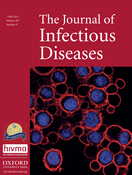JID:流感患者或可通过气溶胶传播流感病毒
2013-05-06 JID dxy
流感被认为主要是通过飞沫传播(微粒直径>5μm,并且在3-6英尺内沉淀);然而在某些特殊情况下,空气传播(微粒直径<5μm ,在空气中处于悬浮状态)也被认为与流感传播有关,比如流感病毒通过气溶胶进行传播。在美国职业安全与卫生管理局(OSHA)和公共卫生流行病学专家间,关于空气传播在流感发生过程所起作用的讨论早已展开,特别是在2009-2010年流感季节期间H1N1病毒株大规模爆发之时。 B
流感被认为主要是通过飞沫传播(微粒直径>5μm,并且在3-6英尺内沉淀);然而在某些特殊情况下,空气传播(微粒直径<5μm ,在空气中处于悬浮状态)也被认为与流感传播有关,比如流感病毒通过气溶胶进行传播。在美国职业安全与卫生管理局(OSHA)和公共卫生流行病学专家间,关于空气传播在流感发生过程所起作用的讨论早已展开,特别是在2009-2010年流感季节期间H1N1病毒株大规模爆发之时。
Bischoff及其同事提出了这样一个问题:在特定的医院环境里,病人是否能产生带有流感病毒的气溶胶。
在2010-2011年流感季节期间,一组来自三级护理教学医院且年龄在2岁以上的患者被作为便利样本,接受疾病预防控制中心的流感疑似病例筛查。研究人员分别取患者的鼻咽处样本和其房间(每小时换气6次,房间处于标准温度和湿度条件)的空气样本做实时PCR检测。
在94名疑似流感患者中,半数是男性或白人,60%的个体满18周岁并且1/3以下的个体曾接种过流感疫苗。94名疑似流感患者中,31名患有A型流感,30名患有B型流感,而余下33名患者在PCR检测后不显示为上述任何一种流感类型。
61名流感患者中,有26名接受气溶胶流感病毒检测,结果显示,有5名患者所产生气溶胶中的病毒量是其他患者的32倍。在1%-10%的流感疑似患者中,检测到6英尺范围内的病毒浓度在感染剂量的50%以上,且根据所设置的临界值,其中89%是小微粒(直径<4.7μm)。虽然有的患者经PCR检测发现其有更高的的病毒载量,但患者间几乎没有临床差异。经过PCR确诊的患者中,不足一半的患者接受了抗病毒治疗。
与流感相关的拓展阅读:
- 应对H7N9禽流感 临床医师应知道什么
- CSB:农科院专家率先揭示H7N9流感病毒来源
- WHO:中国应对禽流感堪称典范
- 中国科学家率先揭示H7N9流感病毒来源
- H7N9流感病毒的感染途径仍然未知
- 山东:H7N9禽流感疑似病例已被确诊 患者病情危重 更多信息请点击:有关流感更多资讯

Exposure to influenza virus aerosols during routine patient care.
Background
Defining dispersal of influenza virus via aerosol is essential for the development of prevention measures.
Methods
During the 2010–2011 influenza season, subjects with influenza-like illness were enrolled in an emergency department and throughout a tertiary care hospital, nasopharyngeal swab specimens were obtained, and symptom severity, treatment, and medical history were recorded. Quantitative impaction air samples were taken not ≤0.305 m (1 foot), 0.914 m (3 feet), and 1.829 m (6 feet) from the patient's head during routine care. Influenza virus was detected by rapid test and polymerase chain reaction.
Results
Sixty-one of 94 subjects (65%) tested positive for influenza virus. Twenty-six patients (43%) released influenza virus into room air, with 5 (19%) emitting up to 32 times more virus than others. Emitters surpassed the airborne 50% human infectious dose of influenza virus at all sample locations. Healthcare professionals (HCPs) were exposed to mainly small influenza virus particles (diameter, <4.7 µm), with concentrations decreasing with increasing distance from the patient's head (P < .05). Influenza virus release was associated with high viral loads in nasopharyngeal samples (shedding), coughing, and sneezing (P < .05). Patients who reported severe illness and major interference with daily life also emitted more influenza virus (P < .05).
Conclusions
HCPs within 1.829 m of patients with influenza could be exposed to infectious doses of influenza virus, primarily in small-particle aerosols. This finding questions the current paradigm of localized droplet transmission during non–aerosol-generating procedures.
本网站所有内容来源注明为“梅斯医学”或“MedSci原创”的文字、图片和音视频资料,版权均属于梅斯医学所有。非经授权,任何媒体、网站或个人不得转载,授权转载时须注明来源为“梅斯医学”。其它来源的文章系转载文章,或“梅斯号”自媒体发布的文章,仅系出于传递更多信息之目的,本站仅负责审核内容合规,其内容不代表本站立场,本站不负责内容的准确性和版权。如果存在侵权、或不希望被转载的媒体或个人可与我们联系,我们将立即进行删除处理。
在此留言








#流感患者#
86
#JID#
74
#气溶胶#
65